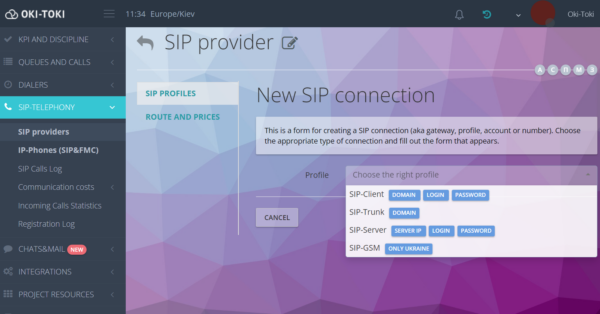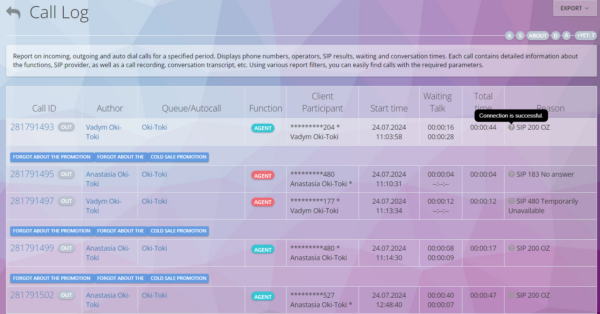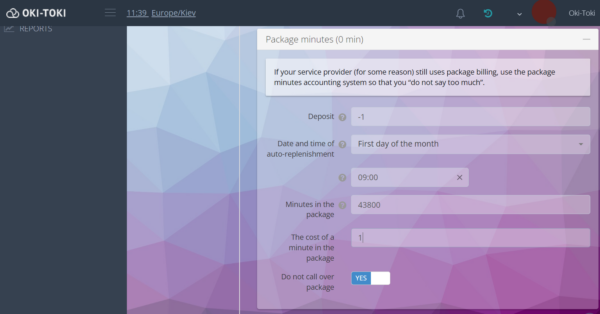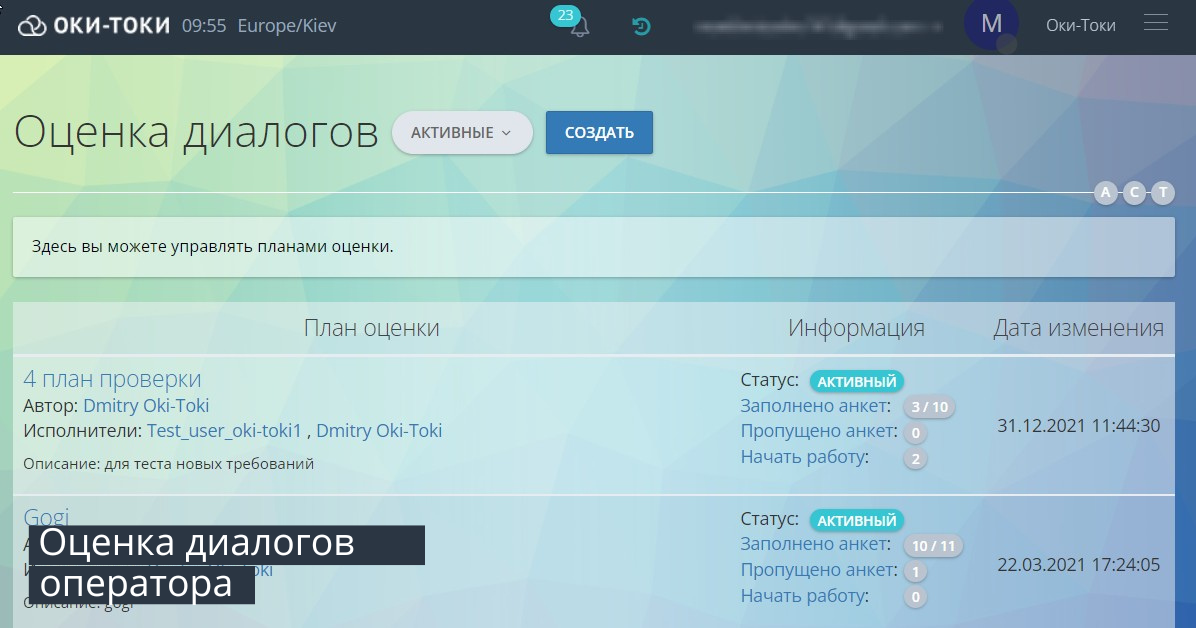What is SIP Telephony?
IP telephony is a key technology in modern communications. The Session Initiation Protocol (SIP) sets standards for establishing, modifying, and terminating communication sessions. To fully appreciate the benefits of SIP, it’s necessary to examine the main aspects of this technology.Let’s start with types of telephony connections (SIP profiles):

SIP Trunk
This is the simplest connection method. The PBX and the telephony SIP provider exchange trusted IP addresses and authorized ports. Nonetheless, SIP providers can complicate “Trunks” with additional protection and rules. Some set up a VPN tunnel for a secured connection, others use the AON identifier (A-number) for flexible routing on the SIP provider’s end. SIP-Trunk is not registered, so its working condition is checked only by a test call;
SIP Client
The most popular type of connection due to its practicality. It can be used in PBXs, as well as in IP phones or similar computer software. Most often, to connect, you just need to enter the login, password, and SIP provider domain provided. The sign of correct settings is the successful registration status “Registered”. In case of connection problems, the status will be “Expired”. As with the “Trunk”, SIP providers may require additional settings such as SIP Name and Realm, but this is not so common.
SIP Server
A rarely encountered type of connection. In this case, the server is the PBX, and the SIP provider registers on it. For example, this is how GSM gateways like GoIP and Digium are connected to us. The call center connects its equipment with SIM cards, the equipment registers in the network on a special website, and the registration data from the PBX (in our case “oki-toki”) are entered in the settings of this website.
The Advantages of IP Telephony in Call Centers
Comparing IP Telephony with Analog Telephony IP telephony for call centers represents a shift from analog technologies to digital, resulting in a number of significant advantages. Unlike analog telephony, where voice is transmitted via traditional analog channels, VoIP telephony uses digital data transmitted over the internet. This provides higher bandwidth and communication quality, as well as more efficient use of network resources.Improving Agent EfficiencySwitching from physical lines to “digital” eliminates the problem of the quality of analog communication, and potentially unlimited lines also provide the opportunity to use an unlimited number of lines per agent. Reducing Communication CostsOne of the key advantages of SIP telephony is its cost efficiency. Instead of the traditional model of paying for the use of physical lines, SIP allows for cost optimization by offering more flexible rates and the option to pay only for the actual resources used. This is important for call centers, where the volume of calls can vary significantly. Reducing overall communication costs while maintaining a high level of service becomes a reality with the introduction of SIP technology.
The Process of a Call in Virtual Telephony
Call Initialization (Invite):Let’s start the process by sending an INVITE to the SIP provider, a request to make a call. This step is similar to initiating a call, informing the SIP provider of our intention to establish a connection.Connection Establishment:
- The first SIP request “INVITE” – we send to the SIP provider.
- SIP 100 – a message indicating that the connection between oki-toki and the SIP provider has been successfully established.
- Next, the SIP provider tries to reach the client, sending SIP 100. If unsuccessful, possible responses are SIP 18X (no answer) or SIP 486 (busy).
- In case of communication errors, the last response could be, for example, SIP 403, 404, 503, 486, 480.
There is a separate article on the blog about SIP responses.
Successful Connection:If the client answers, the SIP provider communicates SIP 200 indicating that the connection has been established, and the client has picked up the phone (which in SIP telephony means “connect”).

Ending the Call:When ending the call, the call logs indicate which side put down the phone first. From the oki-toki side, this is denoted as “kill”, and from the SIP provider or subscriber side, it is “finish”.
Security in SIP Telephony
Dealing with NAT, VPN/Tunnel:In the realm of Internet telephony, ensuring secure and confidential data transmission is a crucial aspect. Implementing NAT, VPN/Tunnel is akin to securely packaging corporate correspondence. This ensures your conversation is protected, guaranteeing no one can intercept your communications. Thus, your business communication remains reliable and secure.Using “Whitelisted Addresses”:In a business environment where ensuring confidentiality is a top priority, “whitelisted addresses” serve as an effective mechanism. This approach is comparable to using a private address accessible only to a limited circle of business partners. The use of “whitelisted addresses” ensures accurate and reliable delivery of your communications, lending a level of confidentiality to your information exchange.Blockades and Firewalls for Protection Against Threats:In a business environment, securing communications becomes critically important. Implementing blockades and firewalls is associated with an effective protection system. Blockades, like virtual guards, meticulously check everyone attempting to access your conversation. Firewalls, in turn, serve as an impermeable wall, preventing unauthorized access and securing your communicative space. Thus, your conversations become a territory fully protected from potential threats.
Limitations in SIP Telephony
Limitation on Calls Per Second (CPS):The limitation on calls per second (CPS) represents a set limit on the number of calls that can be made within one second. This way, the SIP provider prevents possible overloads of their servers from a sharply increased intensity of new calls. The restriction is used by all communication SIP provider and they only warn about the number of lines.Number of Lines and Its Impact on Performance:The communication operator allocates a certain number of lines for voice transmission via the SIP protocol. This number affects the maximum possible number of calls that can be made simultaneously. Insufficient lines can lead to call blocking and loss of potential clients. The call center must control the stock of lines for the efficient operation of its projects.Call Restrictions by Country and Their Significance:This aspect concerns the established restrictions for interaction with different regions. Various countries may have their own rules and standards for making calls, so it’s essential to be informed about such restrictions. This ensures compliance with local norms and prevents potential legal issues and misunderstandings.
Billing in IP Telephony
Usually, when talking about billing rules, one means “per-minute” and “per-second” billing. This scheme calculates the duration of the call. Per-second billing means that the SIP provider charges for the actual duration of the call. If a minute costs 20 cents, and the agent spoke for 15 seconds – the company will pay 5 cents for a quarter of a minute;Per-minute billing – this is when the duration of each call is rounded up to the minute. Whether the call lasted 15 seconds or 59 – the company will pay as for a minute. When talking about billing as on communication plans, then we, at oki-toki, distinguish three main categories:
Simple rates
One or several prices for routes (for example: one price for mobile, another for landlines), usually with per-second billing. Such a tariff is offered for large telephone traffic, therefore it is popular with large call centers. Per-second billing means that the SIP provider charges for the actual duration of the call. If a minute costs 20 cents, and the agent spoke for 15 seconds – the company will pay 5 cents for a quarter of a minute;
Complex rates
Here, a scheme is used with dozens of directions and corresponding prices. This option is suitable if your business is not very active in calls, and optimising associated communication costs is a priority;
Package rates
This is like a subscription for a certain number of calls. The rate is lower than the market, but the billing is per minute and you pay upfront for many minutes.

Additionally
“Number Carousel” in Call Centers:Virtual IP telephony, this mechanism of automatic number changes was created to increase the chances of successful calls. The SIP provider assigns a “number capacity” to the company’s account, usually it’s 40-70 numbers. When using the “Carousel” service, the SIP provider progresses to each new call with the next number on the list. This reduces the speed of being flagged by spam filters and keeps the numbers in operation longer. As a result, calls become more effective and productive in the call center.Accompanied Call Transfer and “Number Forwarding”This business model, where an outsourcing contact center is hired to handle the main flow of calls. Operators identify the target customer, collect the necessary data, and reroute the call to the customer’s manager. The main problem with this model is the use of different PBXs by the call center customer, which means that when redirecting, the manager sees the call center number instead of the customer’s phone. This problem is solved by integrating between the two PBXs or modifying SIP telephony. The task is feasible but requires compromises, therefore the participation of all parties. DTMF Signals and Their Usage:DTMF signals are a method of interacting with the system by pressing buttons on the phone. For instance, when you hear an IVR message “press 1 to connect with an agent,” the customer presses a key and the system processes the received signal, directing the call according to the established scheme. There are two main methods of transmitting DTMF signals: In-band and RFC2833.
- With In-band DTMF, the signals are transmitted along with the audio stream during the call. They are embedded in the voice signal, which can create some recognition accuracy limitations, especially in conditions of low-quality connection. However, this method is widely used and compatible with most devices.
- RFC2833 – is a standard for transmitting DTMF signals in digital networks. Unlike In-band, this method separates DTMF signals into a separate data stream. It enhances recognition accuracy and provides a more efficient signal transmission, especially in real-time conditions.
Both methods have their advantages and are applied depending on the specific requirements of the system. They ensure reliable interaction with the system, making communication simpler and more effective for users.

In this article, we wanted to describe in the simplest and clearest way the essence of telephony for the contact center and the advantages of SIP telephony. This technology provides flexibility, allowing effective management of calls, improving the efficiency of operators, and reducing communication costs.



